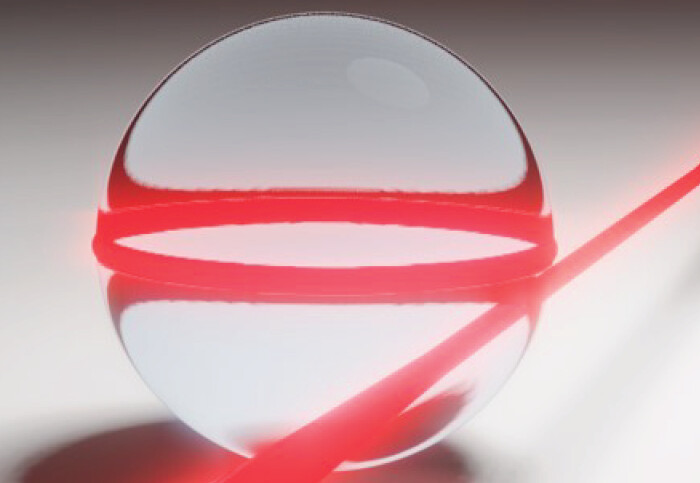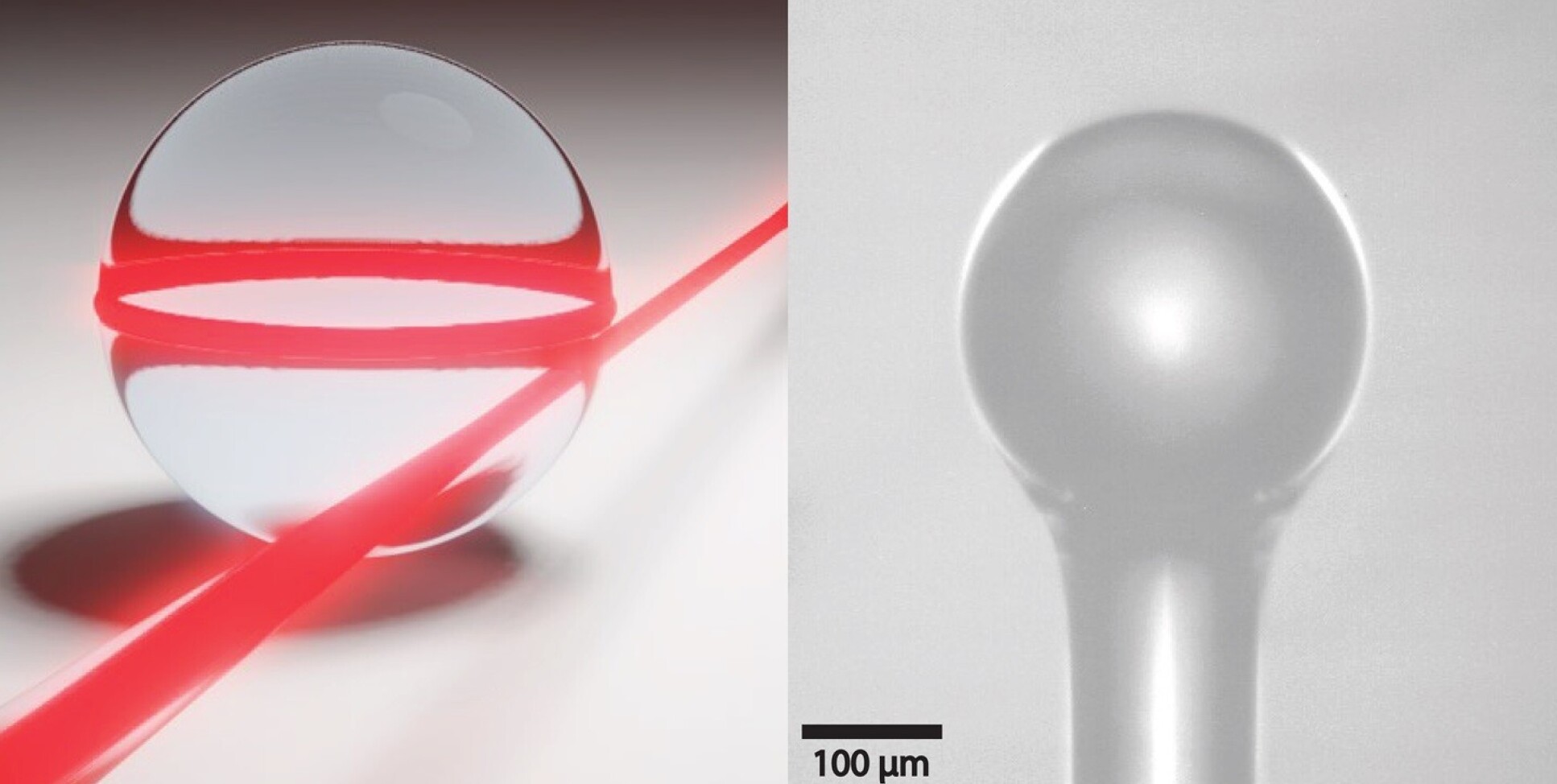

Experiments with single-photon detectors reveal surprising statistics of light created via interactions with high-frequency sound waves.
As light propagates in a material such as glass, the electric field of the light can pull the atoms in the material into regions of high and low density thus creating a sound wave.
This experiment had a richness that we didn’t initially expect. Evan Cryer-Jenkins
This phenomenon—known as Brillouin-Mandelstam scattering—is one of the most studied forms of optical nonlinearity and has enabled a broad range of new applications in laser technology including sensing, information processing, and microscopy. Brillouin-Mandelstam scattering has significant potential for further applications including the exciting opportunity for new acoustic-field-based quantum science and technology.
Researchers from Imperial College London, the University of Oxford, and the Niels Bohr Institute have performed experiments studying this phenomenon with laser light confined to propagate just under the surface of a micro-scale glass sphere.
As the light circulates, it undergoes Brillouin-Mandelstam scattering with high-frequency sound waves also propagating inside the microsphere and creates a new colour of light that exits the sphere in the reverse direction. Then, by carefully measuring the statistical properties of this new colour of light using single-photon counters, the team observed expected behaviour as the generated light became a laser and also revealed unexpected “super-thermal statistics” just below the lasing threshold.
The methodology of this study and the results obtained help to open a rich new avenue of further study. The details of the team’s experiment are published today in the flagship journal Optica, of the Optica Publishing Group.
A central part of this experiment is a silica optical microsphere resonator, see image below. Light enters the resonator using a tapered glass fibre fabricated to be one hundred times thinner than a human hair. Once the light enters the spherical resonator it circulates in a “whispering-gallery mode”, which is named after a similar effect with sound observed in St Paul’s cathedral in the nineteenth century where whispers propagate along the curved wall of the dome and can be heard on the other side.

By controlling the input optical power that builds inside the resonator, the team performed experiments across the threshold at which the scattered light becomes a laser, and measured the “second-order coherence” throughout this region using single-photon detection.
“I was stoked to see this behaviour!” says PhD student and joint first author of the project Evan Cryer-Jenkins, who goes on to explain that “this experiment had a richness that we didn’t initially expect. It was then fascinating to use a combination of experiments, analytical calculations, and numerical simulations to gain a deeper understanding of the physics across the Brillouin-Mandelstam lasing threshold.”
“This project is an important stepping stone for our team’s research in this direction and led to some surprising results that will have multi-faceted impact in our lab and beyond,” says project principal investigator Michael R. Vanner of the Quantum Measurement Lab at Imperial College London.
Read the paper here:
'Second-Order Coherence Across the Brillouin Lasing Threshold' by E. A. Cryer-Jenkins, G. Enzian, L. Freisem, N. Moroney, J. J. Price, A. Ø. Svela, K. D. Major, & M. R. Vanner.
Optica 10, 1432-1438 (2023)
DOI: 10.1364/OPTICA.501089
Contact:
Michael R. Vanner
Quantum Measurement Lab
Imperial College London
www.qmeas.net
Twitter: @QMeasLab
Article text (excluding photos or graphics) © Imperial College London.
Photos and graphics subject to third party copyright used with permission or © Imperial College London.






Leave a comment
Your comment may be published, displaying your name as you provide it, unless you request otherwise. Your contact details will never be published.